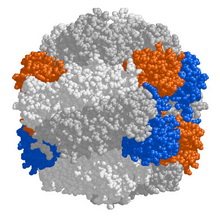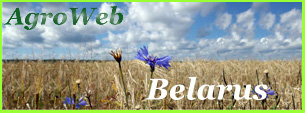|

New fund for livestock biodiversity management at FAO
Will offer grants to developing countries
21 July 2011, RomeÐ’Â - Germany, Norway and Switzerland have contributedÐ’Â a first donation of $1,000,000 to a new, FAO-managed fund designed to help developing countries conserve and sustainably use their livestock breeds.
The fund will provide financing for individual projects submitted by countries in support of the internationally-agreedÐ’Â Global Plan of Action for Animal Genetic Resources. The plan, adopted by all FAO member countries in 2007, has become a key instrument for the conservation and sustainable use of animal genetic resources at global, regional and national level.
Innovative selection process
Any developing country may put forward projects for financing by the fund, which is due to become operational in September. "The money will be disbursed on the basis of letters of agreement between applicant countries and FAO, following an innovative, transparent and impartial selection process led by FAO's Commission on Genetic Resources for Food and Agriculture," says Linda Collette, the Secretary of the Commission.
Some 21 percent of the world's more than 8000 livestock breeds are classified as at risk of extinction. But since the Global Plan of Action went into force, countries' reporting on breeds' population status is improving and points to a slowing of the reported rate of extinction.
Major achievement
"The adoption of theÐ’Â Global Plan of Action for Animal Genetic Resources, the first internationally agreed framework for the management of livestock diversity, was a major achievement - a milestone for the livestock sector and for the management of agricultural biodiversity," says Irene Hoffmann, Chief of FAO's Animal Genetic Resources Branch. "Since 2007, it has become a key instrument for the conservation and sustainable use of animal genetic resources at global, regional and national levels and created important momentum in many countries."
Countries demonstrated their interest in theÐ’Â Global Plan of ActionÐ’Â by translating it into 9 languages serving around 20 countries - and it is currently being translated into another 12 languages. This will increase awareness of sustainable management of animal genetic resources among stakeholders.
Countries are taking important steps in its implementation, although at different speeds and with different priorities. While developing countries aim to strengthen linkages between genetic diversity, livelihoods and food security, several developed countries highlight the links between genetic diversity and landscapes, and focus their activities on development, labelling and marketing of high-value products.
Livestock policies
Several countries are currently revising their livestock or breeding policies and strategies. 16 countries have so far endorsed national strategies for improved animal genetic resources management, and according to Ð’Â informal surveys, 22 more national strategies are in process of development and 15 more are Ð’Â planned. Regional organizations, for example AU-IBAR in Africa, have included use and conservation of genetic resources in their newly developed strategic plans. Such concerted efforts are bearing results already.
A wide portfolio of animal genetic resources is crucial to adapting and developing agricultural production systems to meet the challenges of climate change and growing world population. Other contributions to the fund will be needed from different sources, including from the private sector.
Source: Media Centre FAO
|




